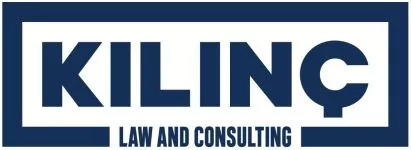- within Transport topic(s)
- in United States
- with readers working within the Oil & Gas industries
Artificial intelligence-enabled autonomous vessels are defined as maritime vessels capable of performing navigation, maneuvering, and cargo operations without human intervention or with limited human intervention.
There is no doubt that these technological developments will give rise to serious gaps and interpretation issues in terms of existing maritime trade law systems. This is because national and international legislation, particularly Turkish Commercial Code No. 6102 ("TCC"), has structured the definition of a vessel, the duties of a captain, and maritime transport contracts based on the human element. The increasing use of autonomous vessels is raising questions about the adequacy of existing regulations, particularly in areas such as the registration of ownership, the status of the captain, the distribution of liability in accidents at sea, and the registration of vessels in the vessel registry.
In this article, the legal status of artificially intelligent-powered autonomous vessels and the liability regime that will arise under Turkish Maritime Law will be examined, along with the current regulations of Turkish law in light of developing approaches in international law, and solutions will be proposed.
Ⅰ. THE CONCEPT OF AUTONOMOUS VESSELS
Autonomy is defined as a system's ability to make decisions and implement them on its own without external intervention. In this context, artificial intelligence (AI) enables the system to make the most appropriate decisions by perceiving environmental data through machine learning. In the maritime industry, autonomy is particularly used to perform functions such as navigation, maneuvering, fault detection, and emergency response without human intervention.
Under the MASS (Outcome of The Regulatory Scoping Exercise for The Use of Maritime Autonomous Surface Vessels) studies initiated by the International Maritime Organization ("IMO"), autonomous vessels are classified into four main levels based on the need for human intervention during voyages. Each level reveals the extent to which humans are involved in the vessel's decision-making processes and where the vessel's control mechanisms are located:
Level 1 – Vessel with Automated Processes and Decision Support Systems
At this level, there is a crew on board the vessel. Some systems integrated into the vessel are automated, and some processes can occur without supervision. However, the crew is always in a position to manually take over these systems at any time. Artificial intelligence is used as a decision support system on these vessels; final decisions are always made by humans. The physical presence of the captain and crew is essential throughout the voyage.
Level 2 – Remotely Controlled and Crewed Vessel
Vessels at this level are remotely controlled and managed from a control center located in another location. However, there is still a limited number of crew members on board. These individuals have the authority to manually manage the vessel in the event of a system failure or emergency. There is a transitional structure between remote control and autonomous operation.
Level 3 – Remotely Controlled and Without Crew
At this level, the vessel is fully remotely controlled, and there is no crew on board. The vessel performs its navigation and operational functions based on commands directed from a shore-based center. All interventions are carried out from the shore-based control unit. This structure is particularly advantageous for long-distance or risky transports where exposing the crew to danger is undesirable.
Level 4 – Fully Autonomous Vessel
Vessels at this level have no remote control or crew support. The vessel evaluates environmental conditions, plans routes, executes operations, and makes real-time decisions when necessary thanks to decision-making mechanisms integrated with artificial intelligence. The system has a fully autonomous structure that operates on its own without the need for external intervention. Although this is the most controversial level from a legal perspective, the complete exclusion of human decision-makers necessitates a restructuring of the liability regime.
ⅠⅠ. THE DEVELOPMENT OF AUTONOMOUS VESSELS AND CURRENT PRACTICES
Today, many countries are testing vessels with varying levels of autonomy and conducting pilot projects.
An example of such projects is the Yara Birkeland project, first developed in Norway. It is the world's first container vessel designed to operate entirely electrically and without a crew. The vessel is initially intended to be remotely controlled, with the goal of eventually achieving full autonomy. The project aims to contribute to UN sustainability goals by reducing carbon emissions to zero. The vessel has already made its first voyage from the town of Horten to the capital Oslo in Norway in November 2021.
Finland has designated certain areas of its maritime territory as test zones to try out autonomous vessel technologies. In this facility, artificial intelligence, radar, GPS and remote control systems are tested together.
Similar to Finland's test areas, China has established an autonomous vessel test center in Zhuhai with the goal of becoming a leader in maritime transportation technologies. At this center, artificial intelligence, radar, GPS, and remote-control systems are tested together to evaluate the safety of maritime vessels operating without human intervention. Nippon Yusen, one of the world's oldest and largest shipping companies operating in Japan, aims to make half of its cargo vessels autonomous by 2040 in order to expand the use of autonomous systems in maritime transportation. These vessels will be used especially in short-distance maritime transportation, i.e. cargo transportation between ports. Thus, it is aimed both to reduce human errors and to reduce operating costs.
In addition to these, IMO, which is a kind of pioneer in the development of world maritime transportation, took its first step on autonomous ships in 2017. With the MASS study initiated on this date, the legal definition of autonomous ships was made and the extent to which existing international maritime conventions are compatible with these new structures was started to be investigated. To this effect, IMO conducted a Regulatory Scoping Exercise ("RSE") and published its first reports as of 2021. In these reports, it is clearly stated that the existing rules are largely based on the presence of the master and crew on board, autonomous systems challenge this structure and therefore new regulations are needed. In particular, it is questioned how international conventions such as SOLAS (Safety of Life at Sea Convention), COLREG (Rules for Preventing Collisions at Sea), STCW (Convention on the Training and Certification of Seafarers) will be applied to autonomous vessels. Almost all of these conventions are based on the presence and responsibility of natural persons on board a vessel. In this case, the operation of autonomous vessels in international waters is in need of legal determinations.
ⅠⅠⅠ. APPROACHES TO AUTONOMOUS VESSELS IN TURKISH MARITIME LAW
There is no doubt that the provisions of the TCC remain inadequate or open to interpretation in the face of technological developments that minimize human intervention, such as autonomous vessels supported by artificial intelligence. In particular, the provisions on the definition of the vessel, the title of master, the use of ownership, and the liability regime based on fault need to be reconsidered in light of today's technological developments.
Article 931 of the TCC defines a vessel as "any vessel that is not very small and has the ability to float, which is required to move in water for the purpose for which it is allocated". In the same provision, it is stated that this vehicle will be considered as a vessel "even if it does not have the possibility to move by itself". Therefore, for Level 3 and 4 autonomous vessels, the absence of human intervention will be considered within the scope of the definition of vessel in technical terms. However, the characterization of autonomous vessels as vessels does not provide sufficient clarity in terms of other elements of maritime law, especially in terms of ownership, the concept of master and seaman, liability regime and insurance relations.
1. The Concept of Ownership
In the case of fully autonomous vessels, the classical definition of ownership and the responsibilities imposed on the vessel owner may need to be re-evaluated. While the owner of the vessel is the ultimate addressee of all debts and obligations arising from the operation of the vessel, in autonomous systems, the operation process is managed by a software, algorithm or remote control system that is completely independent of human intervention. This raises the question of whether the property right is established only on the physical vessel or also on the software infrastructure that operates this vessel. In practice, an autonomous vessel usually becomes functional with the participation of three separate actors: (i) the vessel owner who produces or purchases the physical hull, (ii) the technology provider who develops the software and algorithms, and (iii) the operational operator who manages the remote-control infrastructure. This complex structure makes individual ownership difficult, and even leads to the separation of actual dominion and ownership. In particular, since the artificial intelligence system that enables the operation of the ship is not subject to a separate registration, but is decisive in the management and administration of the ship, the legal liability of the software providers also comes to the fore.
In addition, the generation and control of data on autonomous vessels is a new "value factor". The continuous generation of data by onboard sensors, routing systems and decision-making mechanisms raises issues such as who owns this data and how it should be evaluated within the scope of commercial privacy or property rights. In this context, considering that not only the physical vehicle but also the software and data production have economic value, it can be said that legal regulations regarding vessel ownership should not be limited to maritime law but should be expanded.
2. Title of Captain
On Level 3 and 4 autonomous ships, the title of captain is ambiguous. The master's powers and responsibilities regulated between Articles 1088 and 1118 of the TCC are based on the assumption that there is human intervention on board. The absence of a physical captain on autonomous ships raises the question of who will carry the title of captain when these tasks are undertaken by remote operators or algorithms and how the responsibilities related to this will be structured. For example, pursuant to Article 1088 of the TCC, the master is obliged to act as a "prudent master" in all his/her affairs. This introduces a personal standard of care in both technical and legal terms and defines the standard of conduct in terms of human action. Likewise, the personal liability of the master under Article 1089 of the TCC against the passengers, cargo interests and the shipowner for the damages caused by his negligence raises the problem of which subject or technical system will be held responsible for the erroneous decisions of autonomous systems. In particular, the statement in the second paragraph of Article 1089 that "obeying the order of the owner does not relieve the master from liability" clearly reveals that the master is in an independent and active decision-making position. However, since the decision-making process in autonomous systems is based on algorithmic functioning, this is incompatible with the personal liability regime. The master's duty of care in technical matters such as the seaworthiness, roadworthiness, suitability of the vessel for loading and unloading under Articles 1090 and 1091 of the TCC makes sense in terms of humans who are actually on board the vessel and perform technical controls. However, in the case of an autonomous vessel, where these controls are performed by sensors and artificial intelligence systems, a different inspection and liability regime will need to be established to determine whether this obligation is fulfilled. In particular, the rule that the documents pertaining to the vessel and cargo must be physically on board, as stipulated by Article 1090, will also have difficulty in finding a response in digitalized vessel management systems. On the other hand, provisions such as the master's duty to protect the interests of those related to the cargo (Art. 1112 TCC), the decisions to be taken in cases of deviation from the route (Art. 1113 TCC), and the authority to dispose of the goods (Art. 1114-1116 TCC) demonstrate the master's discretionary authority over the vessel and his capacity to take decisions bearing commercial responsibility. Issues such as which criteria an autonomous system will act according to when taking these decisions, and which liability will arise in which situation, do not find a direct counterpart in the existing provisions.
3. Liability Regime
In terms of the liability regime, there is a similar gap with the title of captain. The fault-based liability system prevailing in our legislation requires the establishment of a causal link between the defective act of the person causing the damage and the occurrence of the damage. However, if the act causing damage on a fully autonomous vessel is an algorithmic decision based on artificial intelligence, it is not yet clear whether fault can be attributed to the algorithm and how the insurance system will respond to such damages. However, it is important to note that the main problem that arises here is that algorithms controlled by artificial intelligence cannot actually have the title of "person" under the Turkish legal system, regardless of whether they are real or legal entities. At this point, beyond the liability for fault, it will not be able to become a direct subject of any event in which damage occurs. Therefore, the first thing that comes to mind in this scenario is that the liability of the operator, software developer, vessel owner, even the manufacturer company, which has the title of legal person in this relationship, arises and even the responsibility is shared among these persons.
Another noteworthy issue is the determination of the rate of fault in maritime accidents and, accordingly, the determination of the liability for compensation. The provisions on liability in case of collision regulated under Article 1288 and the following articles of the TCC are based on factors such as the fault or negligence of the master and crew. In the event that a fully autonomous vessel causes a collision, will a systemic error, an inaccuracy in data entry, or the operator's lack of supervision be held liable? These questions cannot be answered by the current regulations, partly because the use of Level 3 and Level 4 autonomous vessels is still limited and vessels with this degree of autonomy are still being developed.
4. Insurance Law
In this regard, insurance law, which has an important place in maritime law, also faces uncertainties regarding autonomous vessels. While marine insurance in the classical sense determines the scope of coverage by foreseeing risks such as the captain's negligent behavior, marine hazards, fire, collision and force majeure, it should be considered that the cause of damages in autonomous vessels may also arise from new risk factors such as algorithmic decisions, software errors in artificial intelligence systems or cyber-attacks. At this point, it will be a question whether the damages caused by factors such as faulty data processing, sensor failures, lack of software updates, etc. should be considered within the scope of insurance coverage. The definition of liability focused on "human fault" in traditional marine insurance policies will not be directly applicable to autonomous vessels. Therefore, insurers will need to restructure their products to cover risks specific to these new technologies and explicitly include such digital and technologically induced damages in their policies.
In conclusion, the Turkish Maritime Law in its current form is far from meeting the legal issues arising from autonomous vessels. There is a need for a systematic legislative reform in line with the new generation technologies in terms of determination of ownership, master's title and powers, liability regime and insurance regulations. In this framework, it is necessary to closely follow international developments and to adapt the practices that can be taken as examples, particularly the IMO, to Turkish law.
Ⅳ. CONCLUSION
As the current regulations construct the definition of vessels, captain duties and maritime transportation regimes based on human beings, serious gaps arise in the legal status and liability regime of autonomous systems. Especially at fully autonomous vessel levels that do not require any human intervention during the voyage, issues such as who to attribute responsibility to, how to carry out legal capacity and ownership-based transactions become too complex to be answered by current regulations. Studies such as MASS and RSE initiated by IMO show that these gaps are recognized and solutions are being sought. However, the current legislation in Turkey is still based on human-centered maritime practice and does not include any specific regulation on AI-powered autonomous vessels. This leaves a question mark on the ability of the Turkish legal system to adapt to emerging technologies.
In this framework, it is clear that in the short term, there is a need for legal arrangements for the definition and ownership of autonomous vessels, restructuring of the master's functions and differentiation of the liability regime according to the graded levels of autonomy in terms of Turkish Maritime Law. At the same time, it is of great importance to harmonize the technical and legal infrastructure in line with the IMO's guidelines to ensure integration with international maritime transportation. Considering that autonomous vessels supported by artificial intelligence will find a wider place in maritime trade in the future, the law should prepare for this transformation in advance and adopt a proactive approach to eliminate normative gaps.
The content of this article is intended to provide a general guide to the subject matter. Specialist advice should be sought about your specific circumstances.



